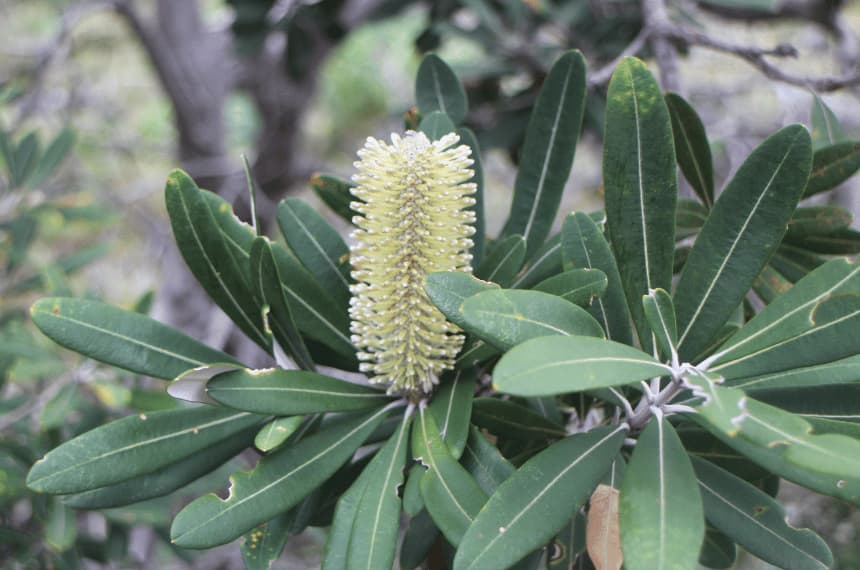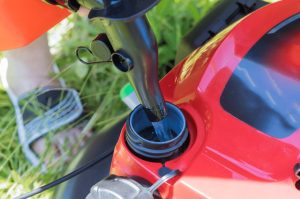Hedges may be a visually appealing and functional addition to any landscape or property. They provide solitude, establish borders, and serve as windbreaks. However, in Australia’s hot and dry climate, selecting drought tolerant hedge plants is critical.
Within this article, we’ll examine the top 10 drought tolerant hedge plants in Australia, their qualities, sunshine and soil requirements, and significant features.
Top Drought Tolerant Hedge Plants in Australia
Below, we’ve listed our 10 preferred drought tolerant hedge plants and provided all the information you need to ensure the best-growing results!
The 10 plants we’re going to analyse are:
- Lily pilly
- Westringia
- Bottlebrush
- Grevillea
- Pittosporum
- Acacia
- Correa
- Tea Tree
- Banksia
- Melaleuca
| Hedge Plant | Features | Sunlight and Soil Requirements | Drought Tolerance Level |
|---|---|---|---|
| Lilly Pilly (Syzygium) | Small to medium-sized tree or shrub with glossy leaves and edible fruit | Full sun to partial shade; well-draining soil | High |
| Westringia (Westringia fruticosa) | Small to medium-sized shrub with narrow, grey-green leaves and small, white or purple flowers | Full sun to partial shade; well-draining soil | High |
| Bottlebrush (Callistemon) | Medium to large-sized shrub with red or yellow flowers that resemble bottlebrushes | Full sun; well-draining soil | High |
| Grevillea (Grevillea spp.) | Small to large-sized shrub with colourful flowers in shades of red, orange, yellow, and pink | Full sun to partial shade; well-draining soil | High |
| Pittosporum (Pittosporum) | Medium to large-sized shrub with glossy, dark green leaves and small, fragrant flowers | Full sun to partial shade; well-draining soil | High |
| Acacia (Acacia spp.) | Small to large-sized shrub or tree with feathery leaves and colourful, fragrant flowers | Full sun to partial shade; well-draining soil | High |
| Correa (Correa spp.) | Small to medium-sized shrub with bell-shaped flowers in shades of pink, red, and green | Full sun to partial shade; well-draining soil | High |
| Tea Tree (Leptospermum) | Small to medium-sized tree or shrub with small, white or pink flowers | Full sun to partial shade; well-draining soil | High |
| Banksia (Banksia spp.) | Small to large-sized shrub or tree with cylindrical flowers in shades of yellow, red, and brown | Full sun to partial shade; well-draining soil | High |
| Melaleuca (Melaleuca spp.) | Small to medium-sized shrub or tree with papery bark and small, brush-like flowers | Full sun to partial shade; well-draining soil | High |
1. Lilly Pilly (Syzygium)
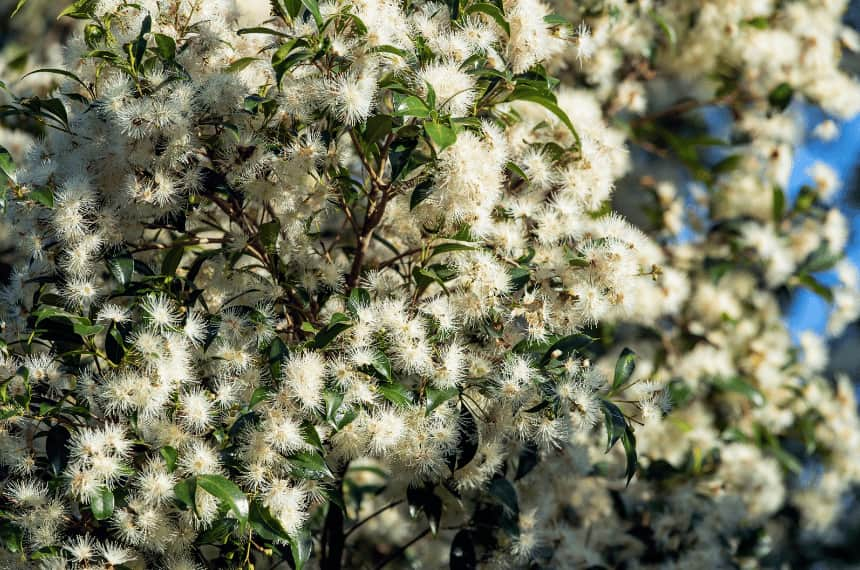
Lilly Pilly, also known as Syzygium, is an evergreen hedge plant that may grow to a height of 10 metres and a width of 5 metres. It grows moderately to rapidly, frequently adding 30 cm to 1 metre of height every year. This hedge plant prefers well-drained soil with a pH between 5.5 and 6.5 and thrives in full sun or mild shade.
Lilly Pilly is drought tolerant, making it an ideal choice for dry locations. However, it is known to be susceptible to diseases such as white scale or myrtle rust. It is known for its bright green foliage and stunning, fluffy white or pink flowers that develop into excellent fruit.
This is a great hedge if you need privacy, as it’s thick structure make it useful as a natural screen.
2. Westringia (Westringia fruticosa)
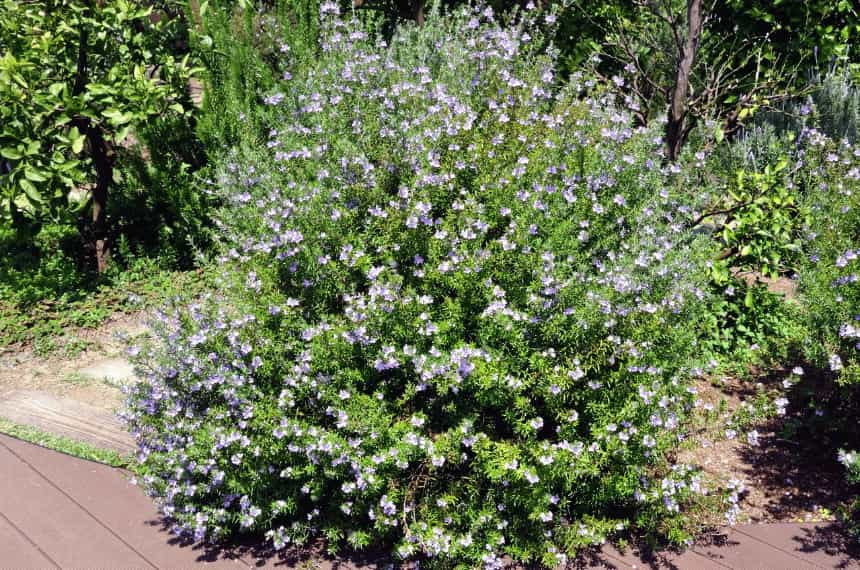
Westringia, sometimes known as coastal rosemary, is a native Australian shrub that can grow to heights and widths up to 2 metres. It grows slowly, adding 20 cm to 30 cm in height annually.
The hedge plant thrives in full sun and well-drained soil with a pH of 5.5 to 6.5. Its distinguishing characteristics are small, fragrant white or purple blossoms and grey-green leaves. This can be used as an effective screening option for backyards, helping you maintain privacy from your neighbours (if needed)!
3. Bottlebrush (Callistemon)
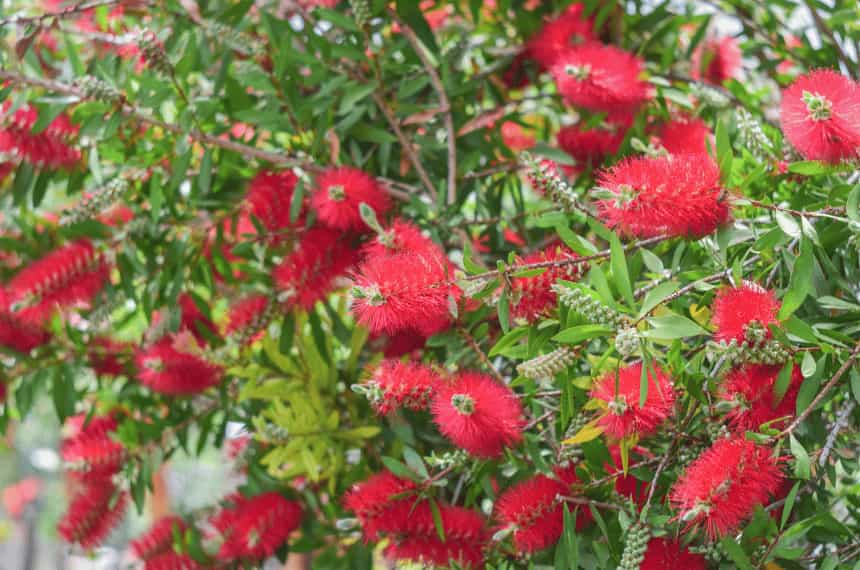
Bottlebrush is an evergreen shrub that can grow up to 5 metres tall and 3 metres wide. It grows moderately, often adding roughly 30 cm of height every year. This hedge plant grows best in full light and well-drained soil with a pH between 5.5 and 7.5.
Bottlebrush is particularly drought tolerant, making it an excellent choice for dry climates and coastal places. Its distinctive features include vivid red, cylindrical flower spikes resembling bottlebrushes.
4. Grevillea (Grevillea spp.)

Grevilleas offers a broad selection of sizes and forms for hedging, with over 350 species to choose from. They can range in size from small shrubs to big trees, with some types reaching 5 metres in height and 3 metres in width. Growth rates vary by species, but they are generally moderate to fast. Grevilleas grow in full sun and well-drained soil with a pH between 5.5 and 7.5.
Most Grevillea species are drought tolerant; their brightly coloured flowers, which come in red, orange, yellow, and pink shades, are also notable.
5. Pittosporum (Pittosporum)

Pittosporum is an evergreen shrub that can grow up to 5 metres in height and 3 metres in width. It grows slowly, often adding 30 cm to 1 metre of height yearly. Pittosporum thrives in full sun or light shade and well-draining soil with a pH between 5.5 and 6.5.
Its glossy green leaves and fragrant cream or white blossoms are notable features.
6. (Acacia spp.)
Acacias are a diverse group of plants that range in size from small shrubs to enormous trees. Some species can reach heights of 10 metres and widths of 5 metres. Growth rates vary by species, but they are generally moderate to fast. Acacias grow in full light and well-drained soil with a pH between 5.5 and 7.
As a result, they are highly drought tolerant and may thrive in various soil types, from sandy to clay. Acacias are notable for their unusual foliage, which is generally composed of thin, feathery leaves or phyllodes (flattened leaf stalks), as well as their brilliant, fragrant blooms, which come in colours of yellow, cream, and pink.
7. Correa (Correa spp.)
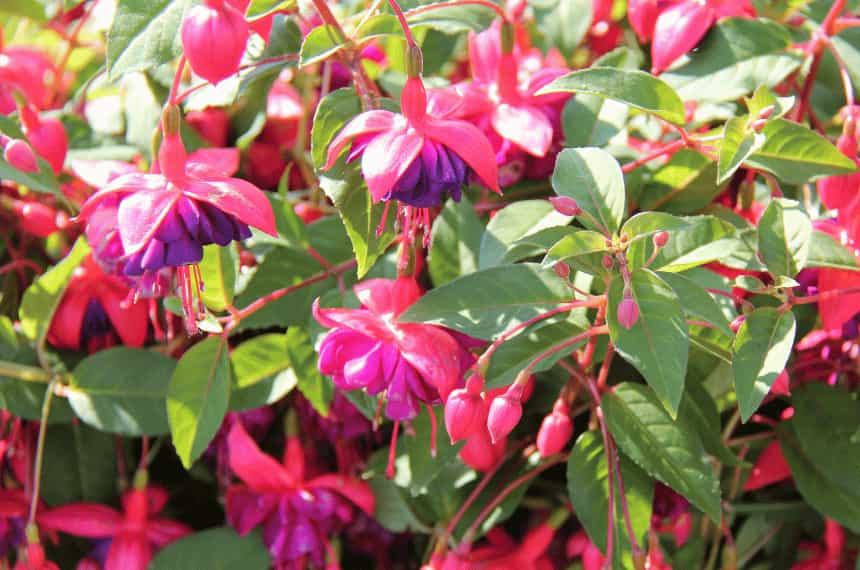
Correa, commonly known as Australian fuchsia, is an evergreen shrub growing up to 2 metres in height and width. It grows at a moderate rate, often adding 20 cm to 30 cm of height every year. This hedge plant grows best in full sun or light shade on well-draining soil with a pH between 5.5 and 6.5.
Correa is extremely drought tolerant, making it an excellent choice for drier areas. Its distinctive features include bell-shaped, pink, red, or white flowers that bloom from autumn through winter and lustrous, dark green foliage.
8. Tea Tree (Leptospermum)

Tea Tree, commonly known as Manuka, is an evergreen shrub that may grow up to 5 metres tall and 3 metres wide. It grows slowly, often adding 30 cm to 1 metre of height yearly. This hedge plant grows best in full light and well-drained soil with a pH between 5.5 and 6.5.
Tea Tree is a drought tolerant plant that blooms in spring and early summer and has aromatic leaves that can be used to produce tea or essential oils.
9.(Banksia spp.)
Banksias are a collection of evergreen shrubs or trees that can range in size from small shrubs to huge trees, with some species growing up to 20 metres in height and 10 metres in breadth.
Growth rates vary by species, but they are generally moderate to fast. Banksias grow in full sun and well-drained soil with a pH between 5.5 and 6.5. Notable features include their beautiful, cylindrical flower spikes in yellow, orange, red, and pink, as well as their unusual leaves, which can be serrated or lobed.
10. Melaleuca (Melaleuca spp.)

Melaleucas are a species of evergreen shrubs or trees that can grow up to 10 metres tall and 5 metres wide. Growth rates vary by species, but they are generally moderate to fast.
Melaleucas thrive in full sun and well-drained soil with a pH between 5.5 and 7.5. Their fluffy, bottlebrush-like flowers in white, pink, red, and yellow, as well as their distinctive, papery bark, are distinguishing features.
Factors to Consider When Choosing Drought Tolerant Hedge Plants
When choosing drought tolerant hedge plants for your garden, consider these features to create a lush, brilliant environment that can withstand even the worst droughts:
- Soil requirements: Select species that will grow in your soil type because plants have varying soil requirements. Some plants like sandy soil, others clay.
- Sunlight: Some plants need full sun, others moderate shade. Choose garden species that can get enough sunshine.
- Water needs: drought tolerant plants need water. Choosing drought tolerant plants that need a lot of water defeats the purpose.
- Height and spread: Consider hedge plant height and spread when choosing. Select species that will reach the desired height and width for your garden.
- Maintenance: Different plants require different maintenance. Some plants require little pruning, while others need more care. Choose maintenance-friendly species.
As always, research each plant’s needs before buying to make the best garden choices. If you have any doubts, don’t hesitate to contact a local landscaper or gardener.
Maintenance and Care Tips for Drought Tolerant Hedge Plants
- Pruning: Regularly pruning hedge plants keeps them clean and promotes healthy growth. For most species, prune in winter to avoid straining the plant. Dead or damaged branches and those that cross or rub should be removed.
- Fertiliser: drought tolerant hedge plants don’t need much. Organic compost or slow-release fertiliser can help plants get the nutrients they need. According to the box, apply fertiliser in spring or fall.
- Mulching: Mulching around hedge plants conserves soil moisture, prevents weed growth, and regulates soil temperature. Avoid placing shredded leaves or bark chips directly against the plant’s trunk while applying a 2-3 inch layer of organic mulch.
- Pest and disease control: drought tolerant hedge plants resist pests and diseases. Scale insects, spider mites, and fungal infections must still be avoided. Regularly check your plants for signs of infestation or illness and address them immediately.
Follow these drought tolerant hedge plant maintenance and care guidelines to keep them healthy and vibrant. Always choose the right species for your conditions and location and research each plant’s needs for the best outcomes.
There you have it, our top 10 recommendations for drought tolerant hedge plants in Australia! If you have any questions or concerns, don’t hesitate to contact us or even reach out to a local specialist.
Happy gardening!



